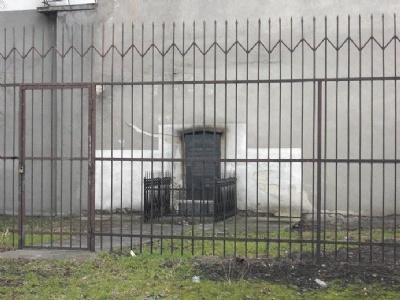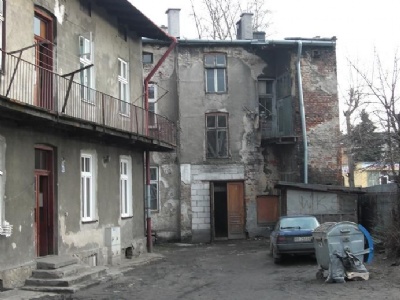Przemysl Ghetto
Przemysl is a town located in southeast Poland, about twenty kilometers from the ukrainian border. The town is divided by the San River, which became the border between Germany and the Soviet Union in accordance with the unofficial additional protocol of the Molotov-Ribbentrop pact. The part of Przemysl on the german side was called Deutsch – Przemysl. This became a focal point for ethnic germans living in Soviet-occupied Poland and was about to be re-settled in German-occupied Poland.
Immediately after the occupation, anti-Jewish laws were introduced on all Jews living in the city. Random arrests of Jews took place and used as slave labor in German factories. A Jewish council was established in the spring, 1940, whose leader was a woman, Anna Feingold, probably the only ghetto with a woman as a leader. She later vanished and what happened to her has never been established but probably she died during one of the first mass deportations in 1942. After the occupation Przemysl was incorporated in the General Government. About 17,000 Jews lived in Przemysl and in July and August, 1941, all Jews were ordered to leave their homes and move to a Jewish quarter (not ghetto). In spring 1942, the Nazis began to murder Jews in the Jewish quarter to make room for new arrivals of Jews from nearby communities.
In the summer of 1942, the quarter was isolated and a ghetto was established with about 23,000 Jews. Jews used as slave labor in German factories received special stamps in their identification papers allowing them to move between the ghetto and their place of work. In late July and early August, the Nazis carried out several major murderous actions. In connection with these, the deportation of Jews (about 6500) was sent to extermination camp in Belzec to be murdered. Other residents of the ghetto were transported to nearby forests where they were shot. The reason why not everyone was sent to Belzec was simply because Belzec did not have the capacity to murder all these Jews. In November 1942, the Nazis began a second murderous action. But this time Jews had built hiding places because rumors had spread what deportation really meant. Therefore, only 3,500 out of 8,000 was deported as the rest stayed in hiding.
After this second action, the ghetto was divided into two parts, ghetto A and ghetto B. Ghetto A was for Jews with work permits while ghetto B was for others. Ghetto A became a labor camp. Nazis began liquidating ghetto B in September, 1943, and about 3,500 Jews were sent to Auschwitz. More than 1,500 Jews hid in the ghetto but gave up after they received a promise to be sent to labor camps. But this was lie and they wer murdered in the courtyard behind the Jewish council’s office. The labor camp (getto A) was also closed in the autumn 1943. The Germans continued the search of Jews in hiding til spring 1944. About 300 of the Jews who lived in Przemysl in June 1941, survived the war.
Current status: Partly preserved/demolished with monument (2009).
Location: 49°47'07.93"N 22°46'38.50"E
Get there: Walk from central Przemysl.
Follow up in books: Arad, Yitzhak: Holocaust in the Soviet union (2009).



Old houses from the time of the ghetto still remain among postwar houses. There are also bunkers from the Molotov Line in Przemysl.